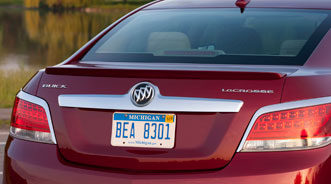Domestics See Strength in Leasing Marketplace; Leasing Continues to Gain Traction Once Again

As the economy continues to improve and credit conditions loosen, leasing remains on the upswing. And according to online car leasing marketplace Swapalease.com, some brands are reaping the rewards of this trend.
After analyzing current inventory on the site compared to inventory levels of 2010, a few domestic brands saw significant increases, with Buick leading the pack.
In what is most likely a result of increased overall lease activity, according to Swapalease, Buick saw the largest rise in inventory on the site (up 87 percent) since 2010 levels.
These numbers may not come as a surprise, as Manheim’s 2012 Used Car Report released last week showed that leasing rates are on the way up.
In fact, according to the report, the number of new-vehicle leases written in 2012 increased to 2.5 million, up from 2.1 million in 2011 and substantially up from 1.1 million in the “trough year” of 2009.
And according to the report, lease penetration rates for General Motors, Ford and Chrysler products have all risen back to double-digit levels after falling to the low single digits in 2009.
And as for Swapalease.com's inventory, in particular, Buick wasn’t the only domestic nameplate to see a boost in inventory on the site.
Jeep (52 percent), Ford (27 percent) and Cadillac (4 percent) also saw inventory levels increase since 2010, as well.
In its report Manheim also shared that Hyundai/Kia vehicles have also shown “significantly higher lease rates in recent years.”
“This is reflective of product offerings that have moved upscale, greater access to lease funding through their captive finance arm, and a history of strong residual performance. In the luxury segment, lease penetration rates have always been more than twice the level of the overall market,” the report read.
On the other hand, the luxury units are not showing up in quite as large numbers on Swapalease.com, according to the company.
Lexus, Land Rover and Jaguar saw their inventory levels fall over the course of the past two years, according to the site’s records.
But, that might not last long for one nameplate.
“Lexus has faced increased lease competition while Land Rover and Jaguar changed lease companies. Increased sales activity at retail today should push Lexus levels back up in the future,” the company reported.
Overall, Swapalease reported that “domestic makers have placed more competitive pressure on foreign car-lease brands” in the site's online leasing marketplace.
That said, all facets of the lease market are continuing to grow. Why the dramatic shift from recession lows? Webb explained the surge can be attributed to a number of factors:
“In recent years, the projected future residual values used in lease contracts have risen to reflect strong past price performance in the wholesale market, more disciplined new vehicle marketing by manufacturers, and better end-of-term remarketing practices,” Manheim reported. “Higher residuals made leasing a more attractive product from both the customer’s and the lessor’s viewpoints. Furthermore, in 2012, as was the case with retail lenders, lessors enjoyed greater access to capital at historically low costs.”
After the leasing fallout after the recession, many wonder, what is a healthy lease penetration rate for today’s market?
When asked this very question during the Manheim’s press conference at the recent NADA Convention and Expo, Webb answered that the “logical” range would be in the low 20-percent range (i.e. lease originations as a proportion of retail new-vehicle sales) moving towards 30 percent as high-income households represented a greater share of the new-vehicle market.
Sarah Rubenoff can be reached at srubenoff@autoremarketing.com. Continue the conversation with Auto Remarketing on both LinkedIn and Twitter.


